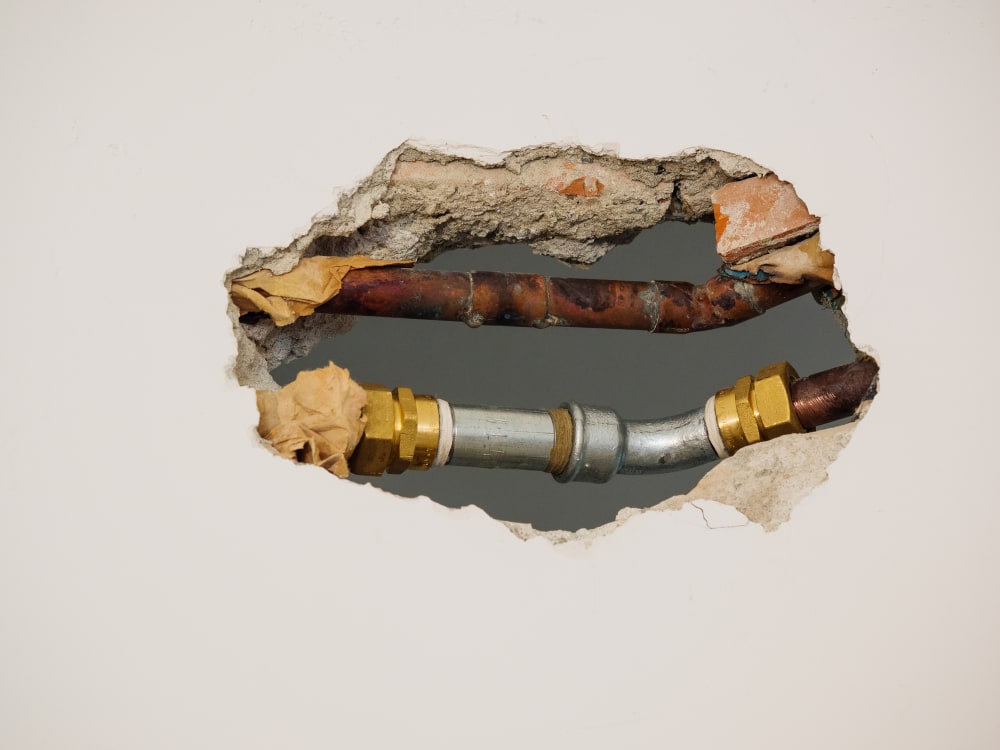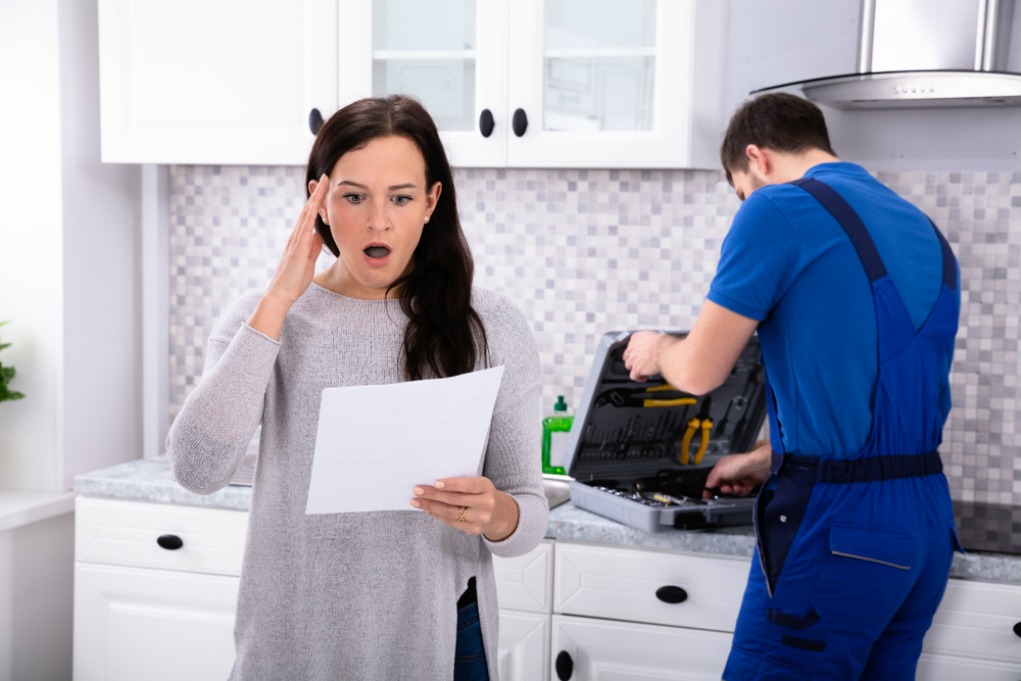Fixing Plumbing Issues in Older Homes: Practical Methods
Fixing Plumbing Issues in Older Homes: Practical Methods
Blog Article
What are your opinions with regards to Plumbing Problems In Old Homes?

Older homes usually come with charm, character, and background, yet they can additionally bring a host of plumbing concerns. Whether you're dealing with aging pipelines, low water stress, or leaks, knowing exactly how to attend to these typical troubles is important to maintaining a secure and functional home. In this overview, we'll check out the typical plumbing obstacles dealt with by older homes and give useful solutions to maintain your plumbing in top shape.
Understanding Typical Pipes Issues
Aging Pipes
Among the most common problems in older homes is maturing pipes. Relying on the age in which your home was built, the pipes could be made from materials that have actually weakened with time, such as galvanized steel, cast iron, and even lead. These materials can corrode, come to be fragile, or create leaks, bring about water damages and prospective carcinogen.
Low Water Pressure
If you're experiencing low tide stress, it could be due to mineral deposits, deterioration inside the pipes, or old components that are no longer functioning successfully. This can be a significant inconvenience, particularly in locations like showers and sinks.
Leaking Pipes
Leakages are an additional frequent issue in older homes, commonly caused by corroded or worn-out pipes. Even little leakages can bring about significant water damage, mold and mildew development, and raised water bills if not resolved promptly.
Outdated Fixtures
Obsolete pipes fixtures such as taps, toilets, and showerheads not only look old however may additionally be much less reliable, prone to leakages, or inappropriate with contemporary pipes standards.
Pipeline Corrosion
Corrosion is a typical issue in older pipes, particularly those made from galvanized steel or actors iron. Rusty pipes can limit water circulation, create staining, and eventually cause leakages or pipeline ruptureds.
Analyzing the Condition of Your Plumbing
Evaluating Noticeable Pipelines
Beginning by checking any type of noticeable pipes in your home, such as those in cellars, crawl spaces, or under sinks. Look for indicators of deterioration, leakages, or rust, which can suggest underlying issues.
Looking for Leakages
Look for leaks by inspecting locations around taps, bathrooms, and under sinks. You can additionally check your water meter prior to and after a period of no water use to detect surprise leakages.
Water High Quality Testing
Older pipelines can influence the high quality of your water. Conduct a water high quality test to look for pollutants such as lead, rust, or various other pollutants that may be introduced by maturing pipes.
Solutions for Usual Pipes Issues
Changing Aging Pipelines
If your home has old, degrading pipes, take into consideration changing them with contemporary materials like copper or PEX. This can be a substantial financial investment, but it will certainly avoid future concerns and improve the safety and security and dependability of your pipes system.
Repairing Low Tide Pressure
To take care of low water stress, start by cleaning or changing old fixtures and eliminating mineral buildup in the pipes. If the issue lingers, it might be required to change areas of corroded pipelines.
Fixing and Changing Dripping Pipelines
For little leaks, you can make use of pipe clamps or epoxy putty as a short-term fix. Nonetheless, it's best to change leaking pipelines entirely to prevent additional damages.
Upgrading Components
Upgrading old fixtures to modern-day, water-efficient designs can enhance your home's plumbing performance and lower water usage. Look for fixtures with the WaterSense tag for the best performance.
Handling Pipeline Corrosion
If your pipes are worn away, replacing them with corrosion-resistant materials like copper, PVC, or PEX is the most effective service. Normal inspections and water high quality upkeep can help avoid better corrosion.
When to Call an Expert
While some pipes issues can be handled with DIY options, there are times when it's ideal to contact a specialist. If you're dealing with major leaks, substantial deterioration, or are unsure regarding the problem of your pipelines, a qualified plumber can offer skilled analysis and fixing.
Preventive Maintenance Tips
Regular Evaluations
On a regular basis evaluate your pipes system for indicators of damage. Capturing concerns early can prevent costly repair work down the line.
Water Pressure Regulation
Ensure your water pressure is within the recommended range to avoid stressing your pipes and components. A plumbing can set up a pressure regulator if needed.
Water Quality Maintenance
Install water filters or conditioners if your water top quality is poor. This can shield your pipelines and components from damage caused by hard water or impurities.
Aggressive Pipeline Substitute
If your home has very old pipes, consider proactive substitute prior to significant problems occur. This can save you from emergency situation repair services and water damage.
Conclusion
Taking care of pipes concerns in older homes needs a mix of alertness, preventative upkeep, and timely upgrades. By comprehending the common obstacles and recognizing when to look for professional aid, you can ensure your pipes system stays practical and trustworthy for many years to come.
Common Plumbing Issues in Older Homes and How to Fix Them
Owning an older home in Australia comes with its unique charm and a set of challenges, especially when it comes to plumbing. The Sunshine Coast has many older properties that can harbour plumbing problems that aren t just inconvenient but potentially costly. Here s a look at some common plumbing issues in older homes and expert advice on how to handle them.
Outdated Piping Materials
Many older homes were built with galvanised steel, cast iron, or even lead pipes, materials that are far from ideal by today s standards. Galvanised pipes are prone to corrosion and clogging, while lead pipes pose serious health risks.
How to Fix:
Replacing old pipes is a job for a professional. Upgrading to copper or PVC piping not only enhances water quality and flow but also increases the property s safety and value. If you suspect your home has outdated materials, a licensed plumber can conduct a thorough inspection and recommend the best course of action.
Corrosion and Pipe Degradation
Over time, exposure to water and minerals can cause pipes to corrode, leading to leaks, bursts, and water contamination. Corrosion is especially common in homes over 50 years old.
How to Fix:
Regular inspections can catch early signs of corrosion. If corrosion is found, the affected section of piping often needs to be replaced. For homes with extensive corrosion, a complete plumbing overhaul might be necessary. It s crucial to consult with a plumbing expert to understand the extent of the issue.
Tree Root Intrusion
Older neighbourhoods usually have mature trees whose roots can intrude into pipe lines, causing blockages or damage. This is particularly problematic for sewer lines, where roots seek out water sources.
How to Fix:
A plumber can use a specialised camera to inspect sewer lines for root intrusion. If roots are a problem, methods like root cutting or hydro-jetting can clear the obstruction. In severe cases, part of the pipe may need replacing. Consider root barriers around the piping to prevent future issues.
Inadequate Water Pressure
Low water pressure in older homes can be due to various factors, including corroded water lines, sediment build-up in pipes, or outdated fixtures.
How to Fix:
First, check if the low pressure is isolated to one area or throughout the house. Replacing old fixtures can sometimes resolve the issue. However, if the problem is more widespread, it might be due to sediment or corrosion. Flushing the system or replacing the affected pipes usually restores normal pressure. Again, a professional assessment is advisable.
Outdated Fixtures
Older homes often feature fixtures that are not only visually dated but functionally inefficient. This includes everything from toilets and taps to showerheads and washing machine hoses.
How to Fix:
Updating these fixtures can improve both water efficiency and the aesthetic appeal of your home. Modern fixtures are designed to conserve water, which can significantly reduce your water bill and lessen your environmental impact.
Conclusion
Maintaining the plumbing in an older home requires a proactive approach. Regular checks and updates are key to preserving these beautiful properties. If you re facing plumbing issues in your older home, it s best to call on experienced professionals like Green & Gold Plumbing & Gas. With the right expertise, even the most daunting plumbing problems can be resolved, ensuring that your home s character is maintained while its functionality is enhanced.
https://gandgplumbing.com.au/common-plumbing-issues-in-older-homes-and-how-to-fix-them/

As a person who reads on Common Plumbing Challenges In Old Buildings, I was thinking sharing that piece of content was a good idea. Please take a moment to distribute this blog if you enjoyed it. Thanks a lot for being here. Return soon.
About Report this page